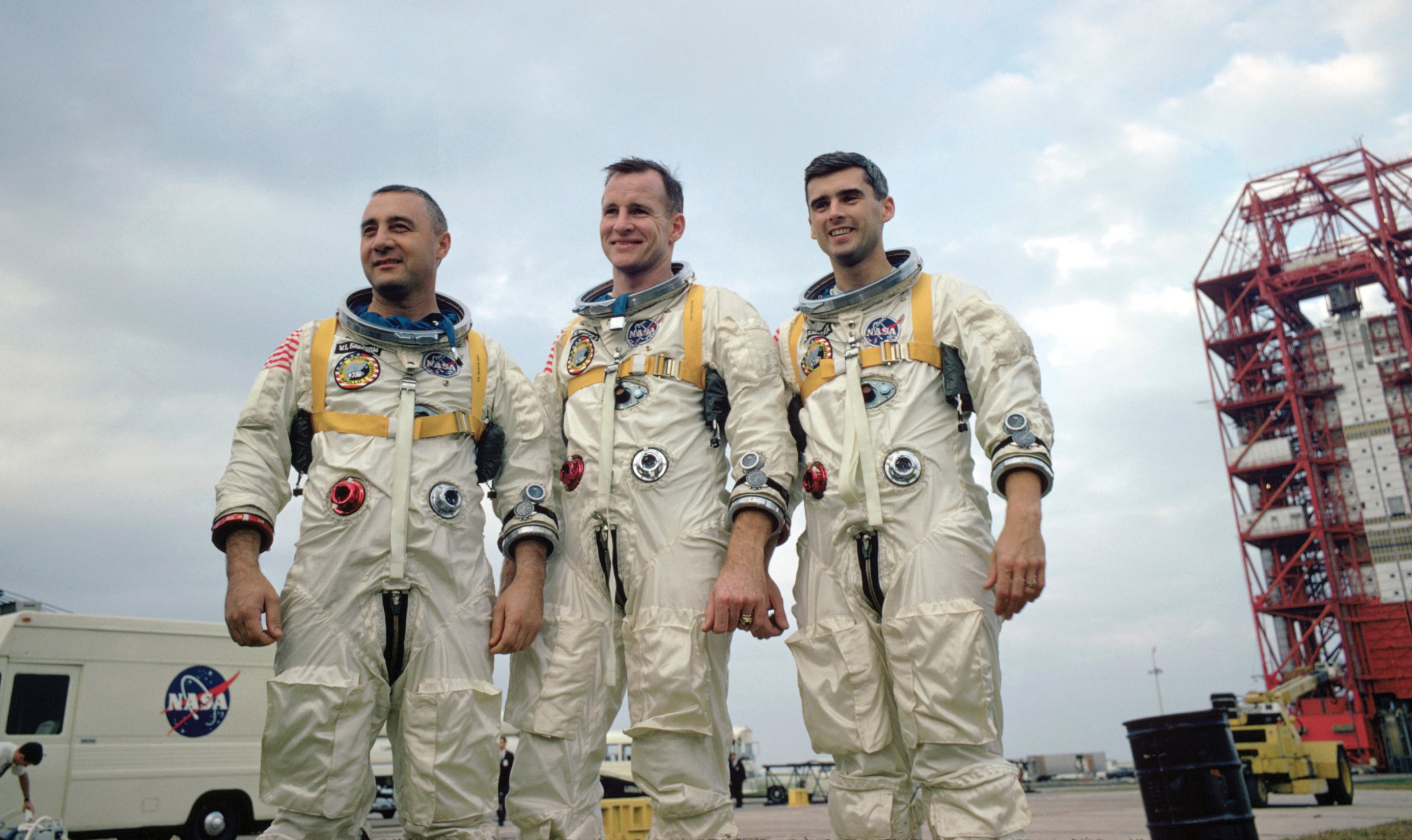
Gus Grissom, Ed White and Roger Chaffee did not get to experience the past half century — and if anybody had been set to have a fantastic half-century, it was those three.
Grissom was one of the original seven astronauts and had flown in space twice; White, a member of the second astronaut class, was the first American to walk in space; and Chaffee—well, Chaffee had everything. He was just a rookie — part of the third astronaut group — but he had cover-boy looks and piloting grit and had already distinguished himself as a hero of the Cold War when he flew reconnaissance over Cuba during the diplomatic stare-down that was the 1962 missile crisis.
Fittingly, in 1966, the men were chosen to be the first to crew to fly NASA‘s three-man Apollo spacecraft — the spacecraft that would one day carry Americans to the moon. Grissom, White and Chaffee would make their test-run flight only in Earth orbit, but when NASA was at last ready to begin flying lunar missions, they’d be better positioned than any of the other men in the fiercely competitive astronaut corps to get their tickets punched for one of the trips.
Only it would never happen. NASA’s open secret was that the Apollo was a jalopy, a hurry-up spacecraft that was being designed mostly with beating the Soviet Union to the moon in mind. The ship was shot through with shoddy workmanship, sloppy cabling and constant breakdowns. On the evening of January 27, 1967, with Grissom, White and Chaffee locked inside the cockpit of their Apollo on the launchpad at Cape Kennedy, the bill for that haste and hubris came due, when a flash fire swept through the spacecraft, killing all three men in barely 20 seconds.
It was a disaster that shook NASA down to its foundations and plunged a country that had known nothing but glittering success in space into deep mourning. And yet, unexpectedly, it was also a disaster that made all of the future Apollo successes possible. The space agency’s later zero-defects ethos, its demand for absolute accountability and thoroughness, its utter intolerance for quick fixes and lazy shortcuts, all had their roots in the loss of those three good men. Had there been no tragedy in January of 1967, there would have been no triumph in the summer of 1969, when Apollo 11 made history’s first manned lunar landing.
Grissom, White and Chaffee’s Earth orbital mission would likely have been known as Apollo 4, with previous, unmanned launches taking the earlier numerals. But after that terrible night in 1967, it was formally re-designated Apollo 1 and forever listed on the space agency’s official manifest of missions flown. That was a fitting decision. Apollo 1 did not achieve any of the goals on its flight plan — but what it did achieve was far grander than the lost pilots themselves could have known.
Week Three of the podcast Countdown tells the tale of Apollo 1.
More Must-Reads from TIME
- Donald Trump Is TIME's 2024 Person of the Year
- Why We Chose Trump as Person of the Year
- Is Intermittent Fasting Good or Bad for You?
- The 100 Must-Read Books of 2024
- The 20 Best Christmas TV Episodes
- Column: If Optimism Feels Ridiculous Now, Try Hope
- The Future of Climate Action Is Trade Policy
- Merle Bombardieri Is Helping People Make the Baby Decision
Write to Jeffrey Kluger at jeffrey.kluger@time.com